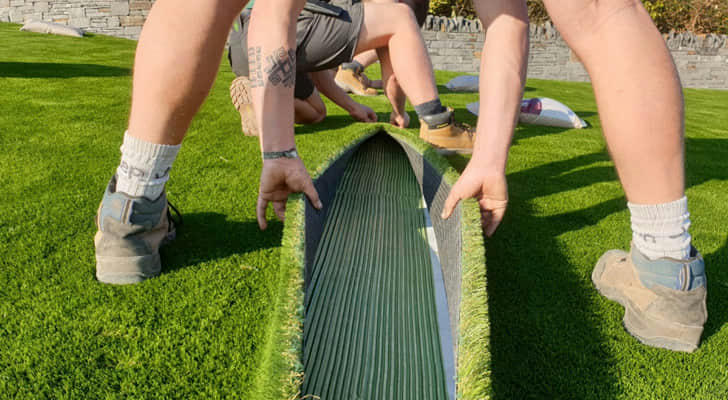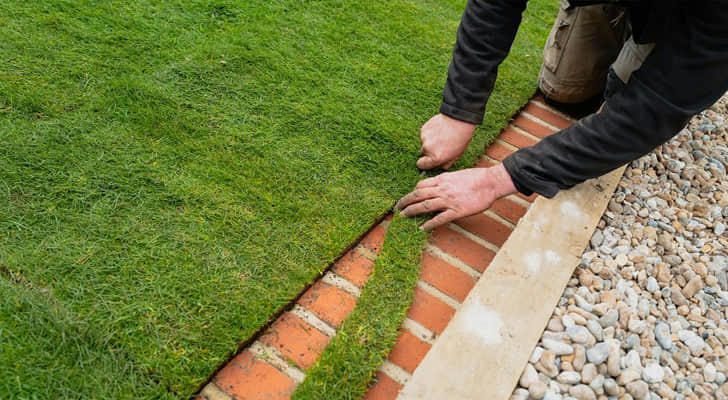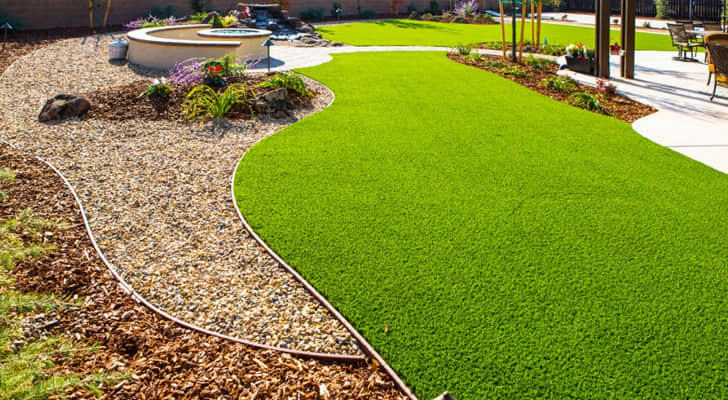From Seed to Lawn: Unveiling the Daily Work of Artificial Turf Installers

Artificial turf has become an essential element of our outdoor spaces. Whether in residential yards, public parks, or sports fields, synthetic grass is increasingly favored for its low maintenance and enduring beauty. Behind this appealing façade are the dedicated artificial turf installers. Their daily work goes beyond simple installation; it involves a blend of technical skill, design acumen, and a keen understanding of customer needs. This article will reveal the daily tasks of artificial turf installers, discuss the challenges faced by the industry, and share real-life examples to highlight the importance of this profession.
Daily Workflow
1. Morning Preparation
As the sun rises, installers begin their day. The first task is to prepare tools and materials, ensuring that rolls of turf, adhesive, nails, and essential tools are ready. Confirming that all equipment is in good working order is crucial for a smooth project.
Take Jack, for example. As an experienced turf installer, he always engages in thorough communication with clients to understand their needs and expectations. This approach not only aids his decision-making during installation but also enhances the overall customer experience.
2. Site Assessment and Preparation
Before laying down artificial turf, a thorough site assessment is essential. Installers evaluate soil conditions, ground levelness, and the effectiveness of the drainage system. If the ground is uneven or drainage is poor, these issues must be addressed first. This step directly impacts the longevity and aesthetics of the turf.
In one project, Jack and his team discovered inadequate drainage on site. After discussing the situation, they decided to install a drainage system before laying down the turf. This proactive approach ensured the project's success and saved the client future maintenance costs.
3. Turf Installation
Once the ground is prepared, it’s time to lay down the artificial turf. Installers unroll the turf, cutting it to the appropriate shapes and sizes according to the design. Proper seam treatment is critical; poorly aligned seams can detract from the overall appearance and lifespan of the turf.
Jack meticulously aligns the seams during the installation process, using professional-grade adhesive to secure the turf and prevent future peeling or curling. Although this step is tedious, it is vital for ensuring the turf lasts.
4. Final Touches and Cleanup
After the installation is complete, installers perform final adjustments, including trimming the edges and ensuring everything is neat. Cleaning the job site is equally important to leave the outdoor space tidy for the client. Jack always takes the time to communicate with clients after the work is finished, confirming their satisfaction with the results.

Industry Challenges and Solutions
The work of artificial turf installers is far from simple; the industry faces several challenges. Here are some common issues along with their corresponding solutions:
1. Supply Chain Issues
The quality of artificial turf directly affects installation outcomes, but supply chain disruptions can occur. This is particularly true during times of heightened demand when certain materials may be scarce.
Solution: Installers often build strong relationships with suppliers and maintain open lines of communication to ensure timely access to materials. Additionally, keeping abreast of market fluctuations and pre-purchasing supplies can be effective strategies.
2. Weather Factors
Unpredictable weather can lead to delays in construction. Heavy rain, strong winds, or high temperatures may compromise both the quality and safety of the installation.
Solution: Installers pay close attention to weather forecasts before starting projects, allowing them to create flexible work plans. When adverse weather is predicted, they can quickly adjust schedules and implement necessary protective measures to maintain quality.
3. Increasing Technical Demands
As customer expectations rise, installers need to elevate their technical skills. They must not only master traditional installation methods but also learn to work with new technologies and materials.
Solution: Ongoing training and education have become vital in the industry. Many installation companies regularly hold training sessions to enhance their teams' technical capabilities. Furthermore, installers often attend industry trade shows and conferences to stay informed about the latest advancements.
4. Diverse Customer Needs
Every client has unique requirements, sometimes leading to personalized design and installation requests. This diversity presents challenges but also offers opportunities for improved service.
Solution: Installers typically engage in comprehensive discussions with clients during initial consultations to understand their needs and expectations. Maintaining transparent communication throughout the project can significantly boost customer satisfaction.

Real-Life Cases
Case Study: Community Park Renovation
Recently, Jack and his team undertook a community park renovation project. The park had become underutilized due to ongoing maintenance issues with the grass. After extensive discussions with the community committee, Jack designed an artificial turf solution tailored to their needs.
During the installation, they discovered significant drainage problems that caused water accumulation. Jack recommended installing a permeable material beneath the turf to ensure efficient water drainage. After several days of hard work, the park not only regained its aesthetic appeal but also became a popular gathering spot for residents, who praised Jack and his team's professionalism.
Case Study: Transforming a Backyard
Another client, Mary, wanted to convert her backyard into a safe space for her children to play. After understanding Mary's requirements, Jack designed a solution that integrated artificial turf with play areas.
Throughout the installation, Jack paid particular attention to edge treatments to prevent injuries during play. After several days of installation, Mary's yard was transformed into a vibrant playground for her kids. Mary was thrilled with the results and recommended Jack's services to her neighbors.
Conclusion
The work of artificial turf installers is an indispensable part of modern landscaping. They don’t just lay turf; they create beautiful, functional outdoor spaces for their clients. Through meticulous preparation and professional installation, they turn client visions into reality.
As the demand for outdoor beautification continues to rise, the role of artificial turf installers will become even more significant. They are not only technicians but also creators of beauty. Jack and his team bring life and vitality to every project, ensuring that each piece of artificial turf becomes a lush oasis in the landscape.
